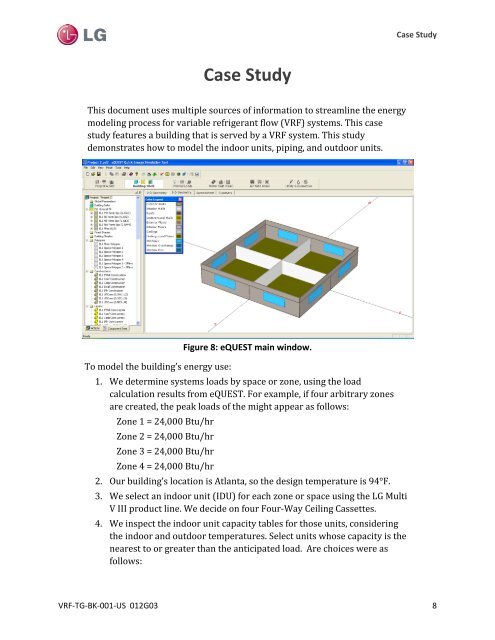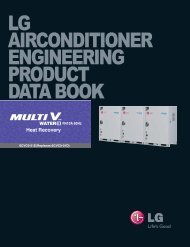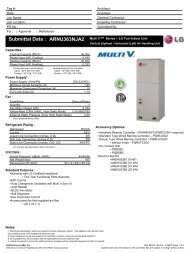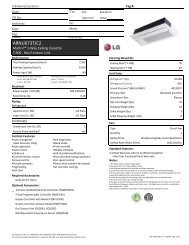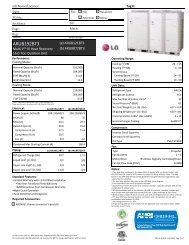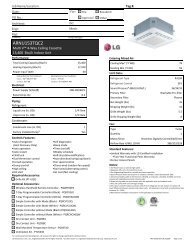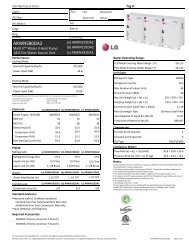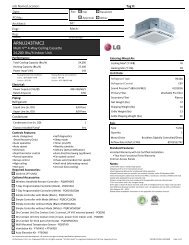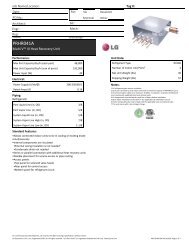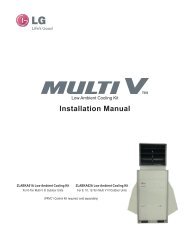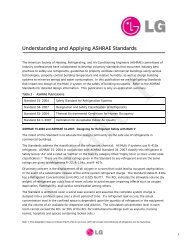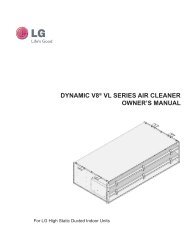eQUEST Building Energy Modeling Guide for LG ... - LG-VRF.com
eQUEST Building Energy Modeling Guide for LG ... - LG-VRF.com
eQUEST Building Energy Modeling Guide for LG ... - LG-VRF.com
You also want an ePaper? Increase the reach of your titles
YUMPU automatically turns print PDFs into web optimized ePapers that Google loves.
Case StudyCase StudyThis document uses multiple sources of in<strong>for</strong>mation to streamline the energymodeling process <strong>for</strong> variable refrigerant flow (<strong>VRF</strong>) systems. This casestudy features a building that is served by a <strong>VRF</strong> system. This studydemonstrates how to model the indoor units, piping, and outdoor units.Figure 8: <strong>eQUEST</strong> main window.To model the building’s energy use:1. We determine systems loads by space or zone, using the loadcalculation results from <strong>eQUEST</strong>. For example, if four arbitrary zonesare created, the peak loads of the might appear as follows:Zone 1 = 24,000 Btu/hrZone 2 = 24,000 Btu/hrZone 3 = 24,000 Btu/hrZone 4 = 24,000 Btu/hr2. Our building’s location is Atlanta, so the design temperature is 94°F.3. We select an indoor unit (IDU) <strong>for</strong> each zone or space using the <strong>LG</strong> MultiV III product line. We decide on four Four-Way Ceiling Cassettes.4. We inspect the indoor unit capacity tables <strong>for</strong> those units, consideringthe indoor and outdoor temperatures. Select units whose capacity is thenearest to or greater than the anticipated load. Are choices were asfollows:<strong>VRF</strong>-TG-BK-001-US 012G03 8


